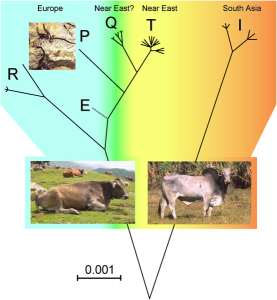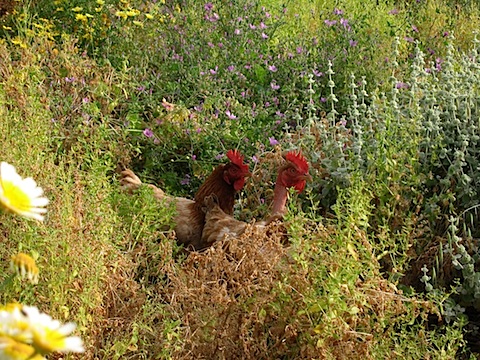We’ve blogged often about the EU’s seed regulations and we continue to keep a watching-eye on developments. So we were very pleased to receive a report from Isabel Lopez Noriega, a policy specialist at Bioversity International, about a conference on Ensuring Seed Availability in the 21st Century, held in Brussels on 18 March 2009. Doubly pleased, because she agreed that we could post it here. Thanks Isabel.
The EU registration and certification system is built around two basic conditions: first, plant varieties have to be distinct and meet certain level of uniformity and stability (DUS conditions, for distinct, uniform and stable). In addition, the EU legislation requests varieties to show their satisfactory value for cultivation and use (VCU).
Civil society organizations representing small farmers, organic food producers and environmentalists have criticized EU legislation because these basic requirements do not take the needs and practices of small producers and amateurs into consideration and may go against genetic diversity conservation principles in general. Landraces and varieties developed by farmers and others may not meet DUS and VCU requirements. Very often, valuable family populations developed by farmers do not pass the uniformity test due to their heterogeneity. This characteristic offers better resistance to biotic and abiotic stresses, but the strict uniformity rules prevent the variety being sold in the European market. Another common limitation for small farmers wanting to commercialize their varieties’ seeds is that they cannot afford the costs and long procedures required by the registration and certification processes. In addition to limiting the opportunities for farmers to obtain revenues from the varieties they produce, this situation results in less genetic diversity available for farmers in the common European market and may ultimately threaten diversity on farms.
Aware of the fact that the scenario which inspired current legislation has changed and that, nowadays agricultural production faces different problems, the European Commission decided to conduct an external evaluation of the EU legislation on the marketing of seed and plant propagating material in 2008, with the aim of establishing how effective and efficiently the legislation has met its original objectives and identifying its strengths and areas for improvement with regard to potential new challenges affecting this field, including genetic diversity conservation. As part of this exercise, the external evaluators consulted a range of stakeholders and experts through surveys and face-to-face interviews. Approximately 130 people representing different sectors involved in agricultural production attended the conference to discuss the results and recommendations.
When assessing the impacts of EU legislation on different elements of agricultural production, the evaluators asked stakeholders about the effects on the preservation of plant genetic resources in the EU. According to the consultation’s results, most stakeholders consider that the legislation has had a positive impact, although they did not provide any evidence.
It is important to highlight that the evaluators’ methodology had some important limitations that hindered the participation of certain types of users. For example, the questionnaires were available only in English and only on-line (except for those stakeholders who were directly addressed by the evaluators). These limitations made the evaluation tools unfriendly for small farmers in remote areas of Europe. It is also not clear to what extent evaluators consulted research institutes and universities.
The Commission has already announced that the current legislation will experience a profound reform. If the evaluation’s results inspire the reform of the EU seed law, it is difficult to predict whether the need to maintain a healthy level of plant genetic diversity in the market and on farmers’ fields will be taken into consideration by the new legislation and whether this need will be translated into a suitable treatment for highly diverse varieties. Most of the users and producers who participated in the evaluation do not consider that certain objectives closely linked to diversity conservation (such as the protection of the environment, low-input agriculture and farm-saved seeds) should be priorities for the new seed law in Europe. At the same time, they do claim that the new legislation facilitates the availability of a broad range of varieties in the European market. Although these two positions seem to be contradictory, this is not always the case as a greater number of varieties does not automatically mean a greater genetic diversity. Many of the improved varieties of the same crop currently available in the European market do not differ much among themselves at the genetic level. This shows that diversity cannot be measured by the number of varieties alone.
Although small farmers and organic farmers’ organizations make themselves heard in current dialogues and negotiations dealing with seed legislation, their interests are still considered marginal by the European Commission in comparison to those of seed companies and large scale producers, who represent almost the whole volume of the European seed market. This sector does not seem to advocate a radical change in the current legislation. The vast majority upholds seed law in relation to the traditional principles of productivity, quality and transparency and is reluctant to include new objectives such as sustainability. In general terms, they are in favor of maintaining the current registration and certification schemes, but adjusting them according to the type of crops. In both the evaluation’s results and at the conference seed companies and medium and large scale producers clearly stated that they would not like to see further differentiations according to the final use of the seed or the type of users, which would perhaps be the best way to protect small-scale producers’ interests and, consequently, diversity.
As the Commission and the EU member states develop a new seed system for Europe, the impact of such a system on plant genetic erosion must be subjected to serious and profound research. A number of existing studies and the results of the evaluation’s survey may offer some preliminary conclusions, but these need to be validated through in depth analyses.

